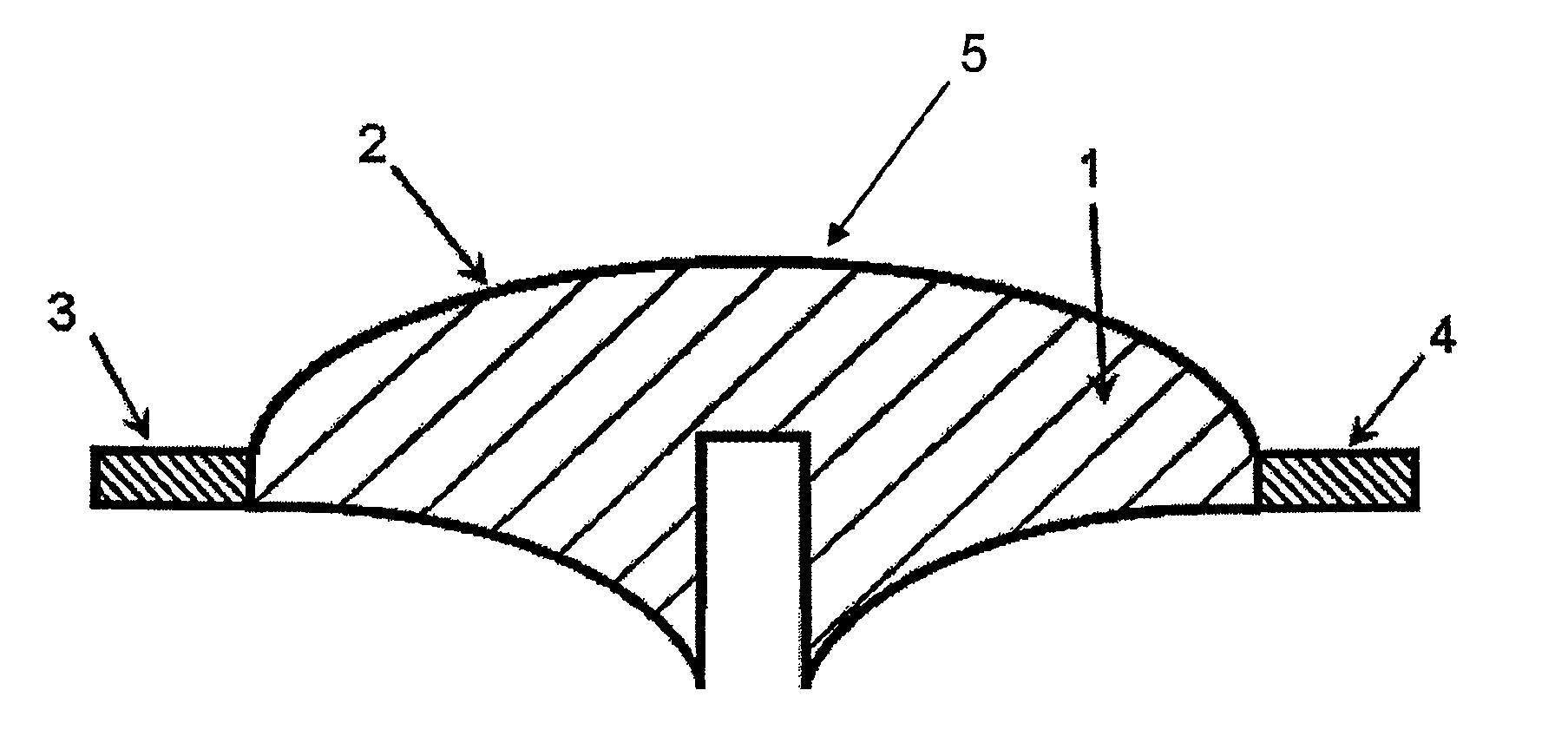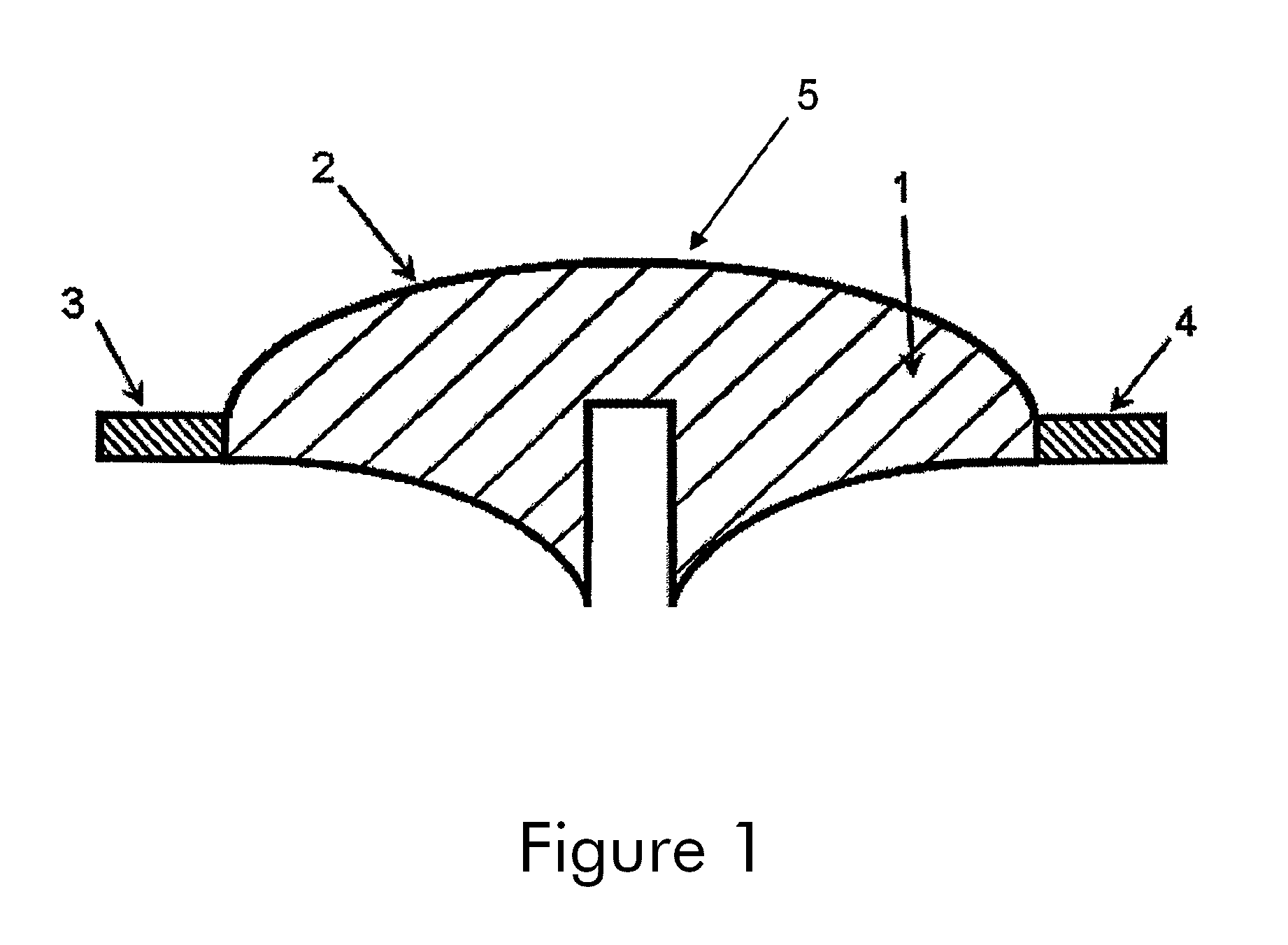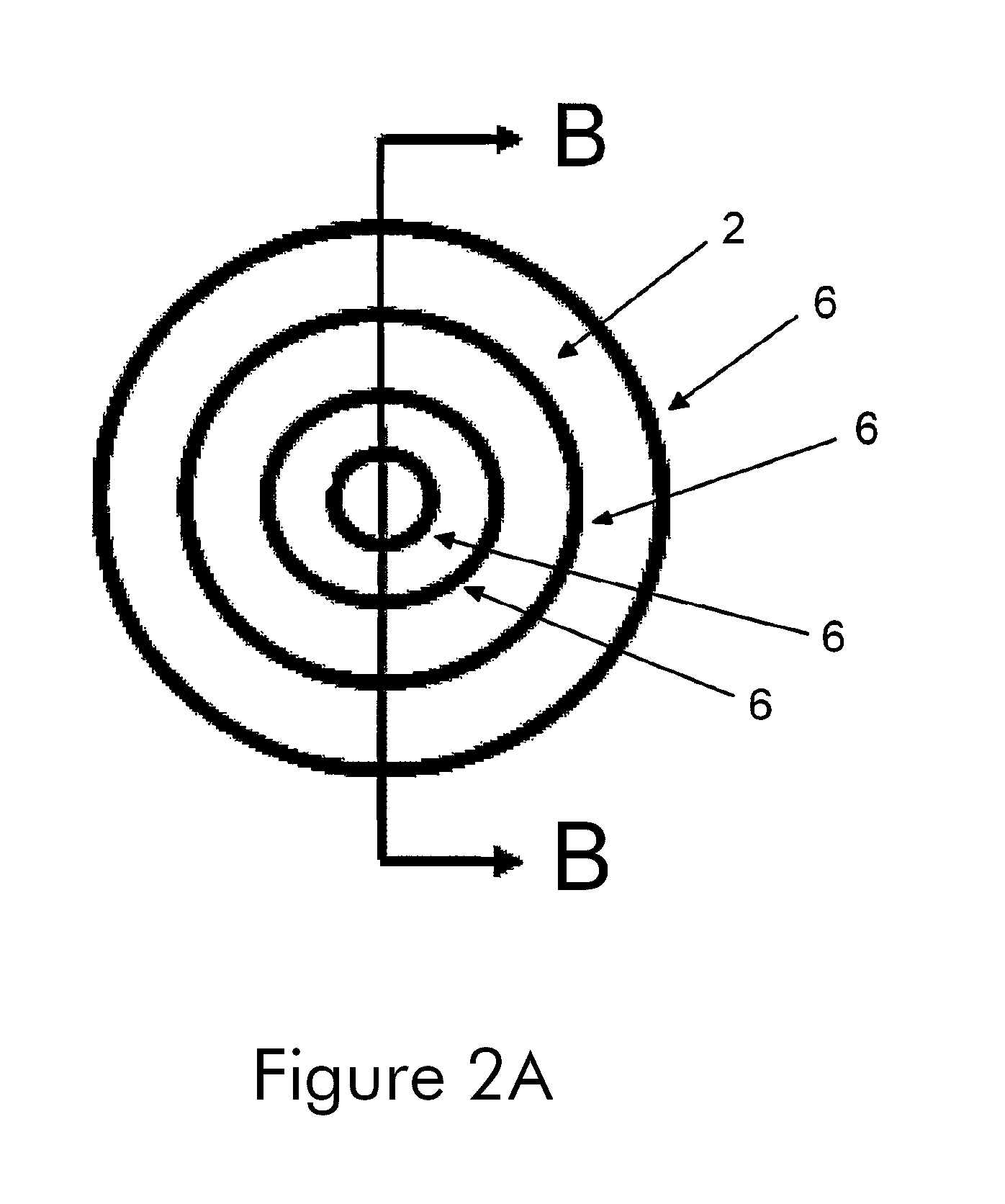Method of constructing a tunable RF filter
a technology of rf filter and tunable filter, which is applied in the direction of semiconductor/solid-state device testing/measurement, magnetic bodies, instruments, etc., can solve the problems of machining techniques, heavy and expensive rf filter production methods, and increase process cost and complexity, so as to reduce the cost and complexity of the fabrication of rf output filters.
- Summary
- Abstract
- Description
- Claims
- Application Information
AI Technical Summary
Benefits of technology
Problems solved by technology
Method used
Image
Examples
Embodiment Construction
[0024]FIG. 1 depicts a cross-sectional view of an RF output filter 5 that is fabricated according to the present invention. RF output filter 5 may include a core body 1, which may be removable as further explained below, and a plastically deformable metallic shell 2 formed around and directly over the exterior surface of core body 1. Plastically deformable metallic shell 2 may include a layer of one metallic material, or two or more layers each composed of a different metallic material. The thickness and the material or materials used for forming metallic shell 2 may vary depending upon the actual design of filter 5. Note that, while FIG. 1 shows metallic shell 2 encasing core body 1, metallic shell 2 may include a perforation, or two or more perforations therein to provide access to the interior thereof. Such access may be used to remove core body 1, or used for the purpose allowing the mounting of connectors or the like to RF filter 5. FIG. 1 further shows an input port connector ...
PUM
| Property | Measurement | Unit |
|---|---|---|
| frequency | aaaaa | aaaaa |
| metallic | aaaaa | aaaaa |
| electrical resistivity | aaaaa | aaaaa |
Abstract
Description
Claims
Application Information
 Login to View More
Login to View More - R&D
- Intellectual Property
- Life Sciences
- Materials
- Tech Scout
- Unparalleled Data Quality
- Higher Quality Content
- 60% Fewer Hallucinations
Browse by: Latest US Patents, China's latest patents, Technical Efficacy Thesaurus, Application Domain, Technology Topic, Popular Technical Reports.
© 2025 PatSnap. All rights reserved.Legal|Privacy policy|Modern Slavery Act Transparency Statement|Sitemap|About US| Contact US: help@patsnap.com



